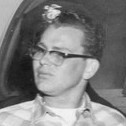
d: 1962
Charles Edwin Kelley
Summary
Name:
Charles Edwin KelleyNickname:
Mad Dog KillerYears Active:
1961Status:
ExecutedClass:
MurdererVictims:
3Method:
ShootingDeath:
September 06, 1962Nationality:
USA
d: 1962
Charles Edwin Kelley
Summary: Murderer
Name:
Charles Edwin KelleyNickname:
Mad Dog KillerStatus:
ExecutedVictims:
3Method:
ShootingNationality:
USADeath:
September 06, 1962Years Active:
1961bio
Charles Edwin Kelley was born in the United States and grew up struggling with health issues and instability. At the age of 15, Kelley was diagnosed with epilepsy after suffering from seizures and dizziness. Despite his condition, he stopped taking medication after about a year. At 17, with his father’s permission, Kelley volunteered for the U.S. Marine Corps but was discharged after only 17 days when he suffered a grand mal seizure during service.
Kelley eventually met Charles Noel Brown while working as a parking lot attendant. The two bonded over heavy drinking and minor crimes. After Kelley committed a screwdriver-armed gas station robbery, Brown used the stolen money to purchase two firearms, which set the stage for their deadly spree.
murder story
In February 1961, Kelley and Brown went on a five-day crime spree across Minnesota, Nebraska, and Iowa that resulted in three murders and three wounded survivors. The pair began on February 18 by robbing a gas station in Minnesota and shooting 17-year-old attendant James Peterson three times, hitting him twice in the head. Peterson survived in critical condition and lived with lasting injuries until his death decades later.
On February 20, they entered a Minneapolis tavern, shooting and killing 52-year-old Howard Trowbridge and seriously wounding bartender George Koch. The duo fled to Omaha, Nebraska, where they killed 60-year-old Harry Goldberg during a liquor store robbery. Kelley later admitted that Goldberg was shot because he failed to follow instructions, while Brown claimed it was to prevent witnesses from reporting them to the police.
The spree continued into Iowa where they carjacked 54-year-old Alvin Koehrsen, forcing him to drive at gunpoint. After driving several blocks, they shot him seven times and dumped him on the street. Koehrsen died two days later. Attempting to escape, the pair shot another man, Kenneth Vencel, three times as he ran for safety. Vencel survived but carried a bullet lodged near his spine for the rest of his life.
The two fugitives, joined by Brown’s girlfriend Josephine Nesbit, tried to flee by bus to Kansas City but were intercepted at a police roadblock. Both men confessed and attempted to take blame for each other. Kelley admitted the shootings were intended to eliminate witnesses, saying, “I figured if he wasn’t shot, he could identify us.”
Tried separately for Koehrsen’s murder, Brown was quickly convicted and sentenced to death. Kelley’s trial ended in a hung jury during the sentencing phase. Facing a retrial, Kelley pleaded guilty, hoping for mercy. Despite evidence of epilepsy and his young age of 20, Judge Leroy H. Johnson sentenced Kelley to death on June 7, 1961.
After all appeals and clemency petitions failed, Kelley resigned to his fate, saying, “I have to pay for it, that’s all there is to it. It’s too late to be sorry.” On September 6, 1962, Charles Edwin Kelley was executed by hanging at the Iowa State Penitentiary in Fort Madison. His last meal included steak, potatoes, salad, blueberry pie, and ice cream. Minutes before his death, he expressed remorse, saying, “I’m sorry what I did,” and requested the prison chaplain read the 23rd Psalm.
Kelley became the second youngest and last person executed under Iowa state law. Along with Brown, who was executed weeks earlier, they were the final prisoners hanged before Iowa abolished the death penalty in 1965.